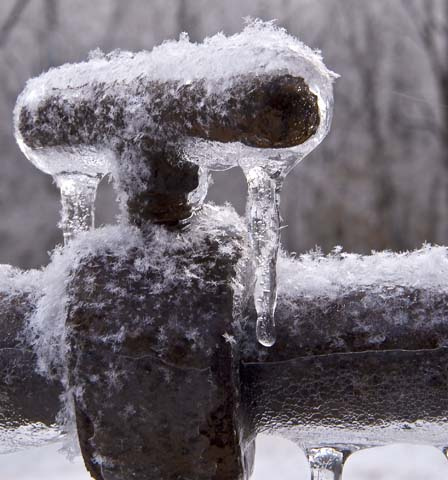Preventing Pipes from Freezing: Best Methods
Preventing Pipes from Freezing: Best Methods
Blog Article
Listed here further down you might get more decent help and advice on the subject of Winter Plumbing Precautions: Preventing Frozen Pipes.

Winter can ruin your plumbing, especially by freezing pipelines. Here's exactly how to prevent it from occurring and what to do if it does.
Introduction
As temperature levels drop, the risk of frozen pipelines boosts, potentially leading to expensive repair work and water damage. Comprehending exactly how to prevent frozen pipes is important for property owners in cool environments.
Prevention Tips
Shielding vulnerable pipes
Wrap pipes in insulation sleeves or utilize warm tape to shield them from freezing temperatures. Focus on pipes in unheated or exterior locations of the home.
Home heating strategies
Maintain interior areas properly heated, particularly areas with plumbing. Open closet doors to allow warm air to distribute around pipes under sinks.
Just how to determine icy pipelines
Look for reduced water circulation from faucets, unusual odors or sounds from pipelines, and visible frost on revealed pipelines.
Long-Term Solutions
Architectural adjustments
Think about rerouting pipes far from outside walls or unheated locations. Include additional insulation to attic rooms, basements, and crawl spaces.
Upgrading insulation
Buy high-quality insulation for pipes, attics, and walls. Appropriate insulation aids maintain consistent temperature levels and minimizes the threat of frozen pipes.
Securing Outdoor Plumbing
Garden pipes and outdoor faucets
Disconnect and drain pipes yard hoses before wintertime. Set up frost-proof faucets or cover exterior faucets with shielded caps.
Comprehending Frozen Pipelines
What causes pipelines to freeze?
Pipelines ice up when subjected to temperatures below 32 ° F (0 ° C) for extended durations. As water inside the pipelines ices up, it expands, putting pressure on the pipe walls and potentially causing them to break.
Dangers and damages
Icy pipelines can bring about water system disturbances, home damages, and pricey repair work. Ruptured pipelines can flooding homes and create comprehensive architectural damages.
Signs of Frozen Piping
Determining frozen pipelines early can prevent them from rupturing.
What to Do If Your Pipelines Freeze
Immediate actions to take
If you suspect icy pipelines, maintain taps open up to relieve pressure as the ice thaws. Make use of a hairdryer or towels soaked in warm water to thaw pipes gradually.
Final thought
Preventing icy pipes needs proactive procedures and quick reactions. By recognizing the causes, indications, and safety nets, homeowners can safeguard their plumbing throughout cold weather.
5 Ways to Prevent Frozen Pipes
Drain Outdoor Faucets and Disconnect Hoses
First, close the shut-off valve that controls the flow of water in the pipe to your outdoor faucet. Then, head outside to disconnect and drain your hose and open the outdoor faucet to allow the water to completely drain out of the line. Turn off the faucet when done. Finally, head back to the shut-off valve and drain the remaining water inside the pipe into a bucket or container. Additionally, if you have a home irrigation system, you should consider hiring an expert to clear the system of water each year.
Insulate Pipes
One of the best and most cost-effective methods for preventing frozen water pipes is to wrap your pipes with insulation. This is especially important for areas in your home that aren’t exposed to heat, such as an attic. We suggest using foam sleeves, which can typically be found at your local hardware store.
Keep Heat Running at 65
Your pipes are located inside your walls, and the temperature there is much colder than the rest of the house. To prevent your pipes from freezing, The Insurance Information Institute suggests that you keep your home heated to at least 65 degrees, even when traveling. You may want to invest in smart devices that can keep an eye on the temperature in your home while you’re away.
Leave Water Dripping
Moving water — even a small trickle — can prevent ice from forming inside your pipes. When freezing temps are imminent, start a drip of water from all faucets that serve exposed pipes. Leaving a few faucets running will also help relieve pressure inside the pipes and help prevent a rupture if the water inside freezes.
Open Cupboard Doors
Warm your kitchen and bathroom pipes by opening cupboards and vanities. You should also leave your interior doors ajar to help warm air circulate evenly throughout your home.

We had been shown that write-up about Winter Plumbing Precautions: Preventing Frozen Pipes from an associate on a different blog. Loved our blog posting? Please quickly share it. Help another person find it. Kudos for being here. Revisit us soon.
Free Quote Report this page